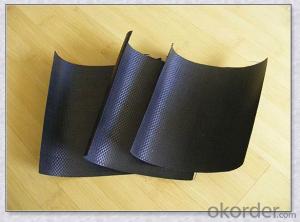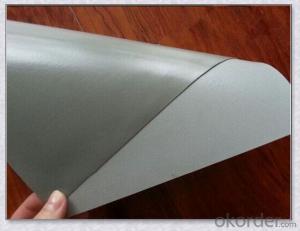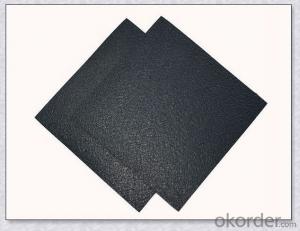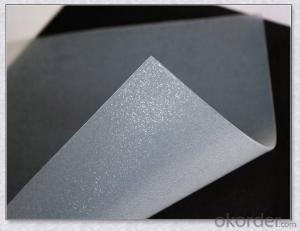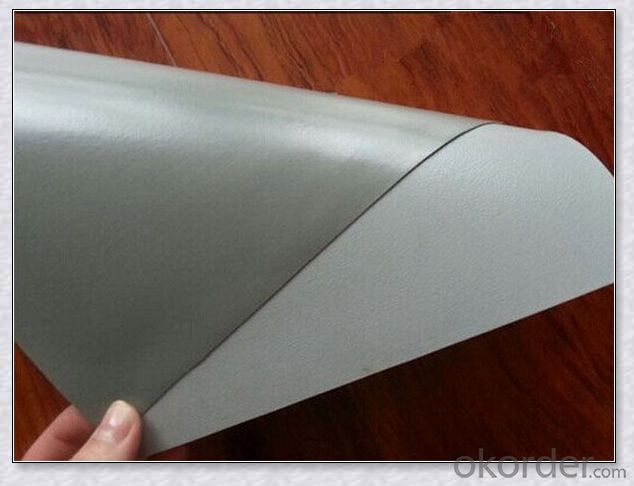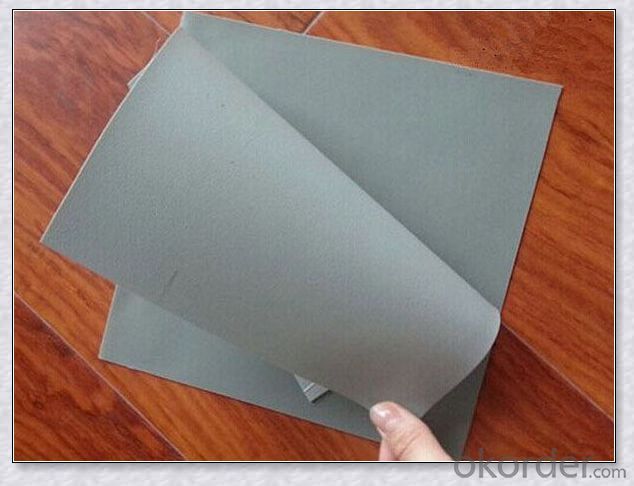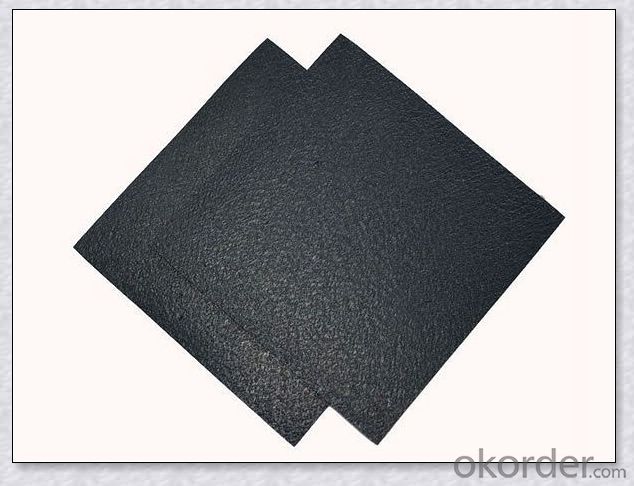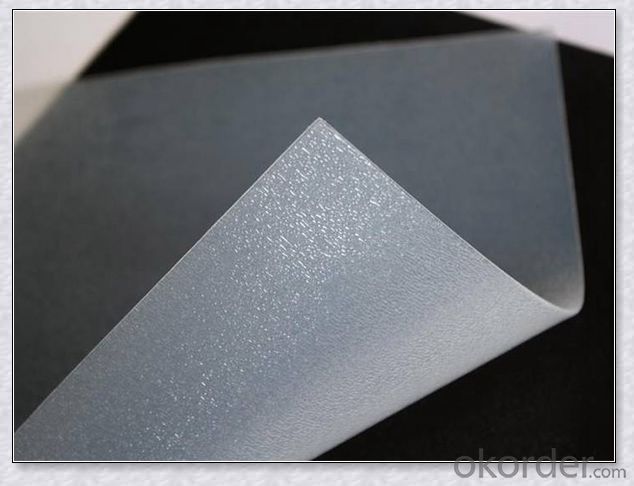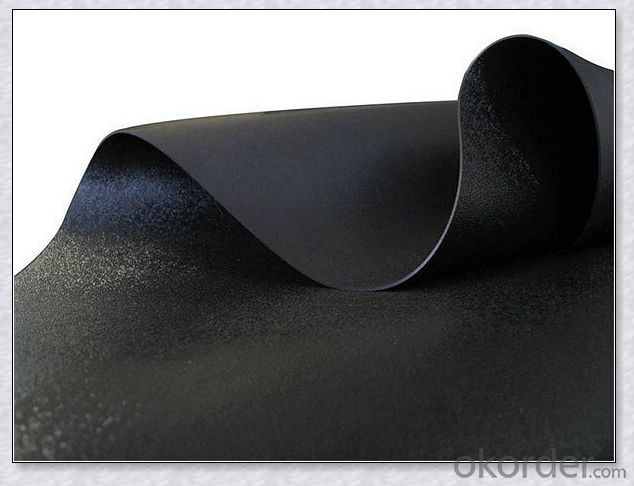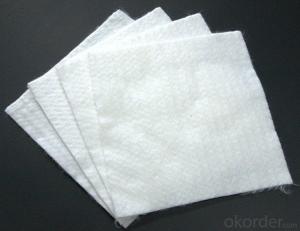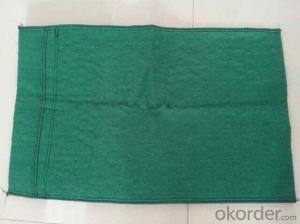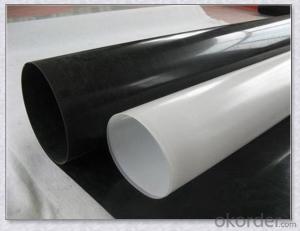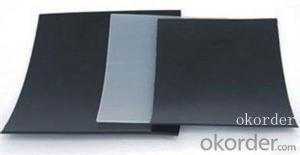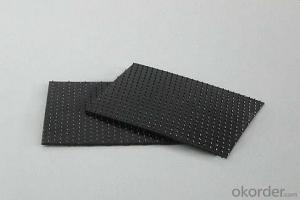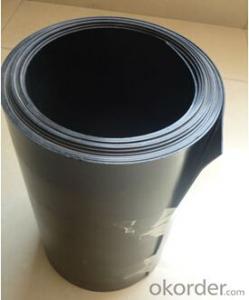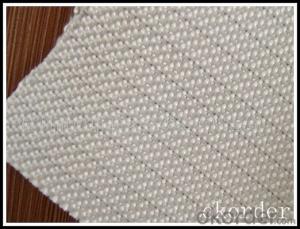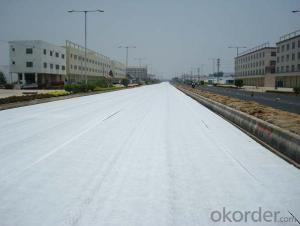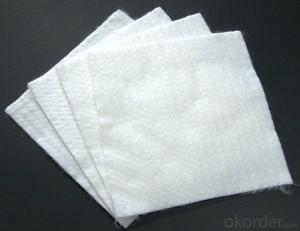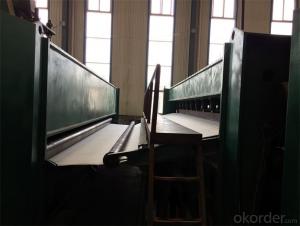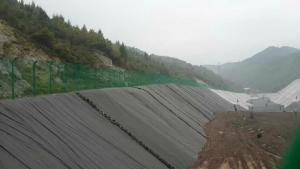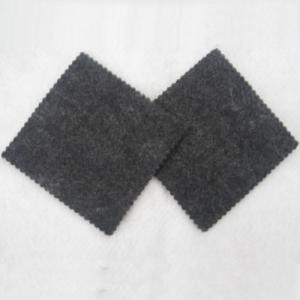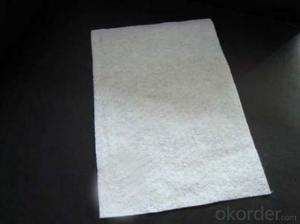Tela Geotextil Para Drenaje HDPE Geomembrane Roll Polyethylene Geomembrane for Dams
- Loading Port:
- China main port
- Payment Terms:
- TT OR LC
- Min Order Qty:
- 1000 m²
- Supply Capability:
- 1000000 m²/month
OKorder Service Pledge
OKorder Financial Service
You Might Also Like
Specification
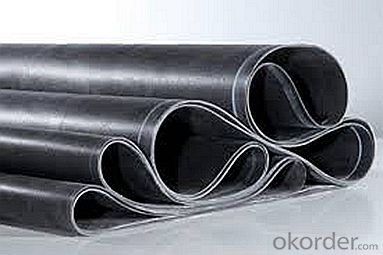
Our factory uses the highest quality resins to manufacture the widest selection of high density polyethylene (HDPE) and linear low density polyethylene (LLDPE) geomembrane products available in either a black, green, white or Conductive upper surface, and in either a smooth or textured single or double-sided surface
Geomembrane is a synthetic cloth, a modern building material with absolute resistance.
Strengths
Environmental Stress & Crack Resistance
Water Resistance
Chemical Resistance
UV and Thermal Weathering Resistance
Conformation to sub-soil movements
Tear Resistance
Puncture Resistance
Repairable
Recyclable
Very low permeability
Our Service
Quality assurance
1.On a regular basis or as per your request,we entrust national testing agencies to conduct quality inspections
2. Strictly in accordance with the ISO9001-2008 international quality system standard,we monitor and manage the whole process throughout production,quality testing,and measurement to ensure product quality
3. For quality-related construction delay or substandard construction(except for damage or losses due to customer’s responsibility or irresistible natural disasters),we have refunding,replacement,and repair services.We will respond to customers’ feedbacks on quality issues within 24 hours.
After-sales service
1.In order to provide customers with comprehensive technical support,we will provide technical and other related information upon request in a timely manner.
2.In required,we will appoint specialized technicians to the construction site to give technical trainings to construction people,and offer technical guidance throughout the whole construction process.
3.For damage due to shipment and delivery,after we receive the complaint,we will check the issure through provided pictures and videos.If our responsibility is confirmed,we wil offer free replacement.
4.When the construction is completed,as your request,our technical staff may participate in the final acceptance.
FAQ:
Q: What kind of payments does jenor support?
A: T/T, L/C, Cash are accepted.
Q: Do you charge for the samples?
A: Accordeing to our company policy, the samples are free, we only charge the freight fee. And we will return the freight fee during the next order.
Q: Can you produce according to customers' design?
A: Sure, we are professional manufacturer, OEM and ODM are both welcome.
Q: Do you have other products?
A: Yes, please check the pictures:
- Q: Can geotextiles be used in agriculture?
- Yes, geotextiles can be used in agriculture. Geotextiles are commonly employed in agricultural practices for erosion control, soil stabilization, weed suppression, and moisture retention. These fabrics help to improve soil quality, conserve water, and protect crops from adverse weather conditions.
- Q: What are the specifications for geotextiles in railway projects?
- The specifications for geotextiles in railway projects typically include factors such as the tensile strength, puncture resistance, elongation properties, and durability of the material. The geotextile should also have the ability to separate and stabilize the soil layers, provide filtration to prevent soil fines from clogging drainage systems, and possess adequate permeability to allow for efficient water drainage. Additionally, geotextiles used in railway projects must meet certain standards for dimensional stability and resistance to environmental factors such as UV radiation and chemical degradation.
- Q: How do geotextiles affect visual aesthetics?
- Geotextiles can greatly enhance visual aesthetics by providing a protective layer that improves the overall appearance of landscapes. They can be used to control erosion, stabilize slopes, and prevent weed growth, resulting in cleaner and more organized outdoor spaces. Additionally, geotextiles can be concealed beneath surfaces such as lawns or gravel, maintaining a visually pleasing environment while serving their functional purpose.
- Q: Geotextile is what is the role to play with what?
- Geotextile can seep water penetration, this argument is wrong, geotextile itself does not have isolation seepage function, only in the geotextile above the composite geomembrane after it has anti-seepage function, this product is called composite geomembrane, not called Geotextile, geotextile function is the water, the water can be easily through the geotextile, but all the impurities inside the water to stay in the geotextile above, and play a filtering effect, so geotextile also known as anti-geotextile.
- Q: Can geotextiles be used for erosion control in mining sites?
- Yes, geotextiles can be used for erosion control in mining sites. Geotextiles are synthetic materials that are specifically designed to stabilize soil and prevent erosion. They can be used in various applications, including mining sites, to control erosion by providing a barrier between the soil and water or wind. Geotextiles help to reduce sediment runoff, improve soil stability, and protect the environment in mining areas.
- Q: How do geotextiles help in preventing soil contamination?
- Geotextiles help prevent soil contamination by acting as a barrier between the soil and potentially harmful substances. They can prevent the infiltration of pollutants such as chemicals, oils, or waste materials into the soil, thereby protecting the soil quality and preventing contamination. Additionally, geotextiles can also help in stabilizing soil erosion, reducing sediment runoff, and enhancing filtration, thus further preventing soil contamination.
- Q: How do geotextiles help with soil separation?
- Geotextiles help with soil separation by creating a barrier between different soil layers. They prevent the mixing of different soil types, which can lead to soil erosion and instability. Geotextiles also enhance drainage and filtration, allowing water to pass through while retaining soil particles, further aiding in soil separation.
- Q: I'm looking for the fabric that goes between gravel and the ground (for a gravel driveway).
- you can get this at wicks do it all (now focus) or any good building merchants
- Q: How do geotextiles contribute to land reclamation projects?
- Geotextiles play a crucial role in land reclamation projects by providing soil stabilization, erosion control, and drainage solutions. They are used to separate different soil layers, preventing mixing and maintaining the integrity of the reclaimed land. Geotextiles also enhance filtration and provide a stable base for vegetation growth, allowing for the successful establishment of plants and vegetation on reclaimed areas. Additionally, they aid in reducing soil erosion caused by wind or water, protecting the newly reclaimed land from degradation.
- Q: How do geotextiles help with reinforcement of geogrid reinforced walls?
- Geotextiles help with the reinforcement of geogrid reinforced walls by acting as a separation layer between the soil and the geogrid. They prevent the intermixing of soil particles and the geogrid, maintaining the integrity and effectiveness of the reinforcement system. Additionally, geotextiles also aid in the filtration of water, preventing the clogging of the geogrid and ensuring proper drainage. Overall, geotextiles enhance the stability and longevity of geogrid reinforced walls by providing essential separation and filtration functions.
Send your message to us
Tela Geotextil Para Drenaje HDPE Geomembrane Roll Polyethylene Geomembrane for Dams
- Loading Port:
- China main port
- Payment Terms:
- TT OR LC
- Min Order Qty:
- 1000 m²
- Supply Capability:
- 1000000 m²/month
OKorder Service Pledge
OKorder Financial Service
Similar products
Hot products
Hot Searches
Related keywords
